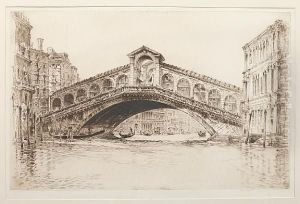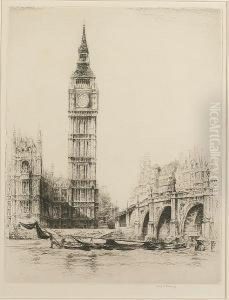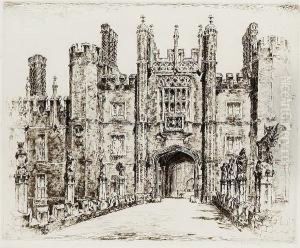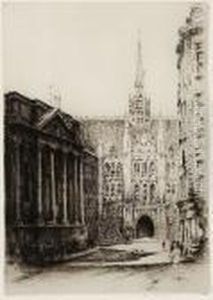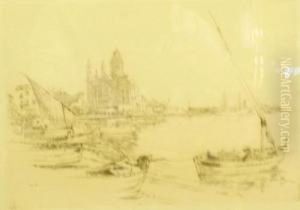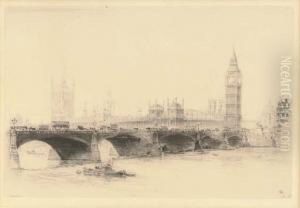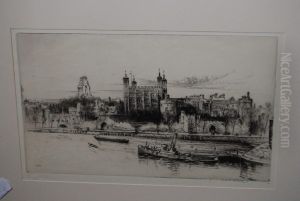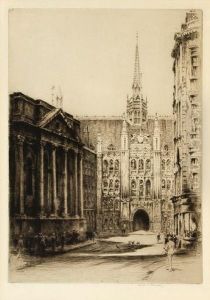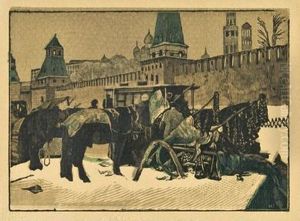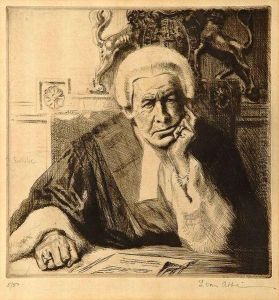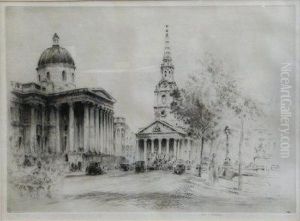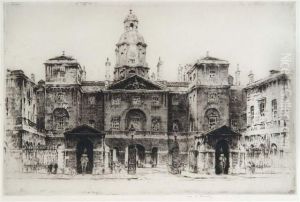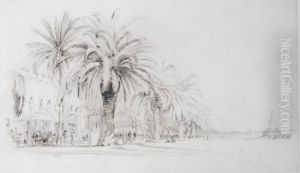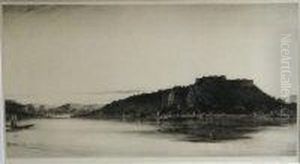Frederick Arthur Farrell Paintings
Frederick Arthur Farrell was a Scottish artist born in 1882, in Glasgow, Scotland. He is most renowned for his role as Glasgow's official war artist during World War I, a position that allowed him to document the war from a unique perspective. His work during this period provides a visceral and harrowing view of the conflict, capturing the essence of the war experience through the eyes of a soldier and a citizen.
Farrell's artistic journey began at the Glasgow School of Art, where he honed his skills and developed his distinctive style. Early in his career, he focused on etchings and watercolors, demonstrating a keen eye for detail and a profound ability to capture the mood and atmosphere of his subjects. His talent was recognized early on, and he quickly established himself within the Scottish art scene.
The outbreak of World War I in 1914 marked a turning point in Farrell's career. He enlisted in the Highland Light Infantry, but his artistic talents did not go unnoticed. He was appointed as Glasgow's official war artist in 1916, a role that required him to travel to the Western Front. There, he created a series of etchings and drawings that depicted the brutal reality of trench warfare, the desolation of the battlefields, and the resilience of the human spirit in the face of adversity. His works from this period are considered some of the most poignant and impactful depictions of World War I, providing invaluable insights into the war's effects on soldiers and civilians alike.
After the war, Farrell continued to work as an artist, but his experiences on the Western Front deeply influenced his post-war output. He produced a number of etchings and drawings that reflected on the war and its aftermath, exploring themes of loss, memory, and the lasting impact of conflict on society and the landscape. Despite his significant contributions to war art and his status as one of Scotland's foremost war artists, Farrell's work was somewhat overlooked in the years following his death in 1935.
Today, Frederick Arthur Farrell's legacy is being reassessed, and his contributions to art and history are gaining recognition. His war-time etchings and drawings are now seen as an invaluable record of World War I, offering a poignant and deeply personal perspective on one of the 20th century's most devastating conflicts. Through his work, Farrell not only documented the horrors of war but also highlighted the enduring human capacity for resilience and hope in the darkest of times.
